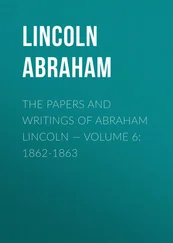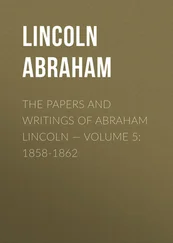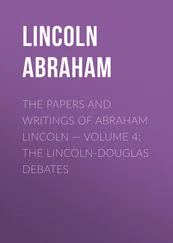MUHAMMAD WAS SUCCEEDED by his son Ala-ud-din Mujahid, a handsome man of awesome physical prowess. But he was ill-fated, for after a brief reign of three years he was assassinated by his cousin Daud, who then ascended the throne. But Daud himself was assassinated within a few weeks by Ala-ud-din’s partisans, who then raised Daud’s brother, Muhammad, to the throne. The reign of Muhammad II was largely peaceful and lasted nineteen years. He was a rather unusual ruler for that age and place, for he was a learned man — lauded as an Aristotle by his courtiers — and a man of peace and culture, who showed a genuine concern for the welfare of his subjects, such as providing famine relief — though only for Muslims — and by establishing several orphanages and free schools.
Muhammad II was succeeded by his eldest son Ghiyas-ud-din, a seventeen-year-old youth, but he was blinded and overthrown within two months by Tughalchin, the chief of the Turkish slaves in the royal service, who then raised the sultan’s younger brother Shams-ud-din to the throne. But the arrangement lasted only five months, as the new sultan in turn was blinded and overthrown by his cousin Firuz Shah, who then ascended the throne.
The quarter-century-long reign of Firuz was the most engaging period in the history of the Bahmani Sultanate. Firuz, like his uncle Muhammad II, was a highly cultured, talented and liberal monarch. He was a linguist and a gifted calligrapher, and a keen and knowledgeable patron of literature, art and music, who delighted in the company of writers and intellectuals. A keen student of astronomy, he had to his credit the building of a major observatory near Daulatabad.
According to medieval chronicler Tabataba, Firuz was ‘a good, just, generous king, who supported himself by copying the Koran, and the ladies of whose harem used to support themselves by embroidering garments and selling them.’ This is quite probably an idealized account. The reality would not have been quite so edifying. Still, there is no doubt that Firuz was a highly successful monarch, who had substantial accomplishments to his credit in nearly every sphere of government. Ferishta describes him as the greatest of the Bahmani kings.
In administration, Firuz had the wisdom and broadmindedness to appoint a good number of Hindus, particularly Brahmins, to high positions in government, and that no doubt improved the efficiency of his administration. Firuz was equally successful in his military campaigns. For three decades since Muhammad Shah’s invasion of Vijayanagar in 1367, there had been no major military conflict between the two Deccani kingdoms, but the wars resumed in earnest during the reign of Firuz. The aggressor this time was king Harihara II of Vijayanagar, who in 1398 invaded the Raichur Doab with a mammoth army of about 30,000 cavalry and 900,000 infantry. Advancing north through the Doab, he deployed his forces along the southern bank of the Krishna, his army covering a vast area measuring roughly 27-by-27 kilometres, according to medieval Muslim chroniclers. The size of the Vijayanagar army, and the land area it covered, are no doubt vastly exaggerated by these writers, to glorify the victory of their hero over such immense odds. In contrast to the vast Vijayanagar horde, the Bahmani army deployed against it is said to have been a cavalry force of just 12,000.
WHATEVER THE ACTUAL strength of the rival forces, Firuz would have had only a much smaller army than that of Harihara. In the face of the massive deployment of the Vijayanagar army along the Krishna riverbank it would have been suicidal for the Sultanate army to cross the river and engage the enemy. Some means therefore had to be found to divert the attention of the Vijayanagar forces, to enable the Sultanate army to cross the river safely. In that predicament one of Firuz’s officers suggested a clever stratagem to him. This officer, Siraj-ud-din, was an expert juggler, and was also proficient in music and dance, and he offered to infiltrate into the Vijayanagar camp with a small troupe of followers in the guise of wandering minstrels, and cause some turmoil there, taking advantage of which Firuz could then cross the river and surprise the enemy, it was suggested.
The plan worked out perfectly. Siraj-ud-din and a band of two dozen companions entered the periphery of the Vijayanagar camp one day, and gradually, over several days, gained such a high esteem as entertainers that they were summoned to perform before Harihara’s son in the army camp. That the entertainers were Muslims roused no suspicion, for the Vijayanagar army itself had a good many Muslim soldiers and officers in it. On receiving the prince’s invitation, Siraj-ud-din sent a secret message to Firuz informing him of the developments and requesting him to be ready to cross the river and attack the Vijayanagar army during the chaos he would cause in their camp.
As usual, Siraj-ud-din’s performance was given at night, and it involved, among several other items, a display of startling skills with sword and dagger. As the prince and his cohorts relaxed watching the show, Siraj-ud-din and his comrades suddenly pounced on them and cut them down, then killed the royal bodyguards, and, in the ensuing confusion, escaped from the camp. Soon, as the news of the incident spread, and along with it several fantastic rumours, the Vijayanagar camp was thrown into utter turmoil. Taking advantage of this, the Bahmani army crossed the Krishna, and at dawn stormed into the Vijayanagar camp. Harihara, grieving over the death of his son, and faced with the disorder in his camp, was in no position to stand and fight, so he quickly withdrew to Vijayanagar, his capital, carrying his son’s body with him. Firuz chased him in hot pursuit, plundering the countryside all along the way, and this forced Harihara to purchase peace from Firuz by paying him a very substantial indemnity.
After this, Firuz was for a while engaged in campaigns in the north of his kingdom, to consolidate his power. Then he once again turned against Vijayanagar. There is an engaging romantic legend associated with this campaign. The story centres on Parthal, the stunningly beautiful daughter of a poor goldsmith in Mudgal, a town in the Raichur Doab. On hearing about her great beauty, Devaraya I, who had succeeded Harihara to the throne of Vijayanagar, demanded her for his harem. But the girl declined the proposal. So Devaraya, enraged, swept into the Doab with a small contingent of 5000 horse, and sent a band of his soldiers to abduct the girl. But by the time the soldiers reached Mudgal, the girl and her parents had fled north across the Krishna, so the contingent vented its frustration by pillaging the region before returning to Vijayanagar. Parthal was eventually married to Firuz’s son, Hasan Khan.
FIRUZ USED DEVARAYA’S intrusion into the Raichur Doab as an excuse to mount a fresh invasion into Vijayanagar. In the ensuing battle, fought beside the city of Vijayanagar, Firuz was defeated by Devaraya, and he himself was wounded. He then fell back to his fortified camp some distance away from the city, where he was able to defend himself successfully against Devaraya’s repeated attacks. He in turn then sent his soldiers to ravage and despoil the countryside all around. Devaraya then, to protect his people, sent envoys to Firuz to arrange peace, and it was concluded on the terms dictated by Firuz, under which Devaraya agreed to pay a huge sum as indemnity to the sultan, and also to give him a daughter in marriage with suitable endowments.
Ferishta offers a detailed account of the marriage, which throws interesting sidelights on the social practices of the age. According to Ferishta, ‘though the rajas of Carnatic had never yet married their daughters except to persons of their own caste, and giving them to strangers was highly disgraceful, yet Devaraya, out of necessity, complied [with the demand of Firuz], and preparations for celebrating the nuptials were made by both parties … [By then] both sides of the road between [Vijayanagar] city and the sultan’s camp … were lined with shops and booths, in which jugglers, buffoons, dancers, and mimics of Carnatic displayed their feats and skill to amuse passengers.’
Читать дальше












